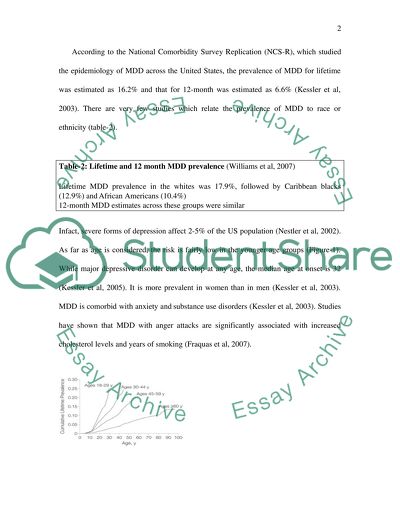Cite this document
(Major Depressive Disorder Case Study Example | Topics and Well Written Essays - 2500 words, n.d.)
Major Depressive Disorder Case Study Example | Topics and Well Written Essays - 2500 words. Retrieved from https://studentshare.org/health-sciences-medicine/1542282-describe-major-depressive-disorder-highlighting-the-neurochemical-and-physical-changes-that-are-associated-with-this-disease-based-on-the-known-neurochemical
Major Depressive Disorder Case Study Example | Topics and Well Written Essays - 2500 words. Retrieved from https://studentshare.org/health-sciences-medicine/1542282-describe-major-depressive-disorder-highlighting-the-neurochemical-and-physical-changes-that-are-associated-with-this-disease-based-on-the-known-neurochemical
(Major Depressive Disorder Case Study Example | Topics and Well Written Essays - 2500 Words)
Major Depressive Disorder Case Study Example | Topics and Well Written Essays - 2500 Words. https://studentshare.org/health-sciences-medicine/1542282-describe-major-depressive-disorder-highlighting-the-neurochemical-and-physical-changes-that-are-associated-with-this-disease-based-on-the-known-neurochemical.
Major Depressive Disorder Case Study Example | Topics and Well Written Essays - 2500 Words. https://studentshare.org/health-sciences-medicine/1542282-describe-major-depressive-disorder-highlighting-the-neurochemical-and-physical-changes-that-are-associated-with-this-disease-based-on-the-known-neurochemical.
“Major Depressive Disorder Case Study Example | Topics and Well Written Essays - 2500 Words”. https://studentshare.org/health-sciences-medicine/1542282-describe-major-depressive-disorder-highlighting-the-neurochemical-and-physical-changes-that-are-associated-with-this-disease-based-on-the-known-neurochemical.


